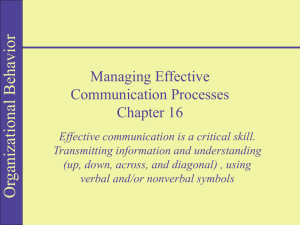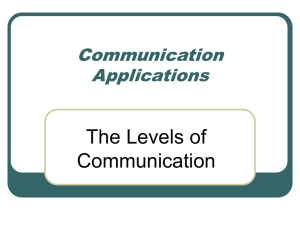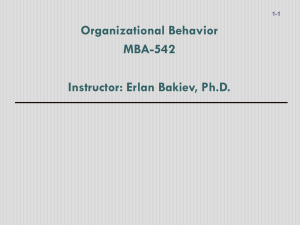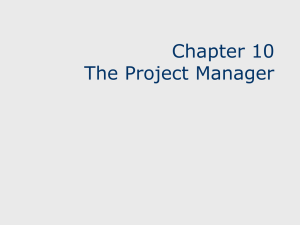Interpersonal Relationship Problems - deafed-childabuse
advertisement
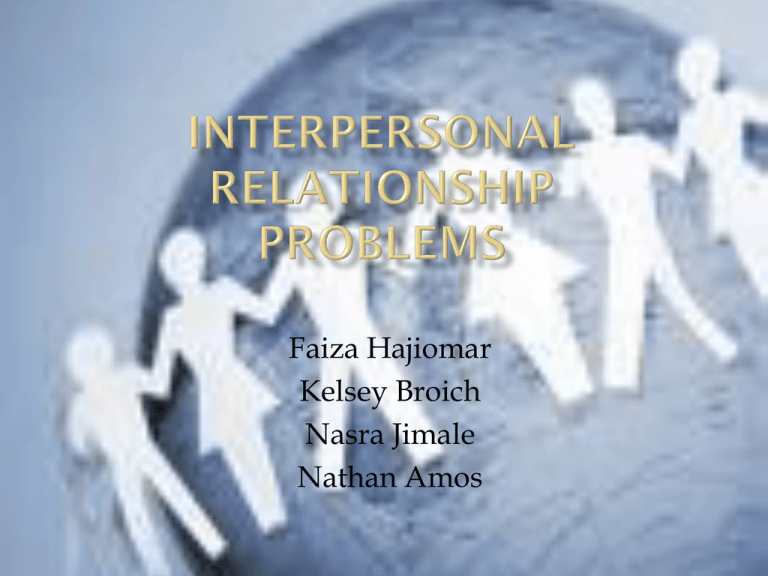
Faiza Hajiomar Kelsey Broich Nasra Jimale Nathan Amos Definitions Scope of the problem Population likely to be effected What is the course of the disease The characteristics Symptoms Manifestations Culture variations Treatment of the illness Treatment options Problem solving techniques available The effectiveness and outcomes Role of the professional Recognition Assessment Interventions referral We experience interpersonal relationship with family, friends, classmates, co-workers and some times even strangers. There are no creature that can escape interpersonal relationships Strong factors that determine our relationships with others are our emotions, outside factors, and even the order of the individuals birth Its hard to grasp the scope of the problem since peoples experiences and circumstance are different . An interpersonal relationship is a relatively longterm association between two or more people. This association may be based on emotions like love and liking, regular business interactions, or some other type of social commitment. Interpersonal relationships take place in a great variety of contexts, such as family, friends, marriage, acquaintances, work, clubs, neighborhoods, and churches. They may be regulated by law, custom, or mutual agreement, and are the basis of social groups and society as a whole. Although humans are fundamentally social creatures, interpersonal relationships are not always healthy Children learn through Healthy relationships that people are trustworthy, therefore they become healthy adults and mature at a healthy rate. Children who experience persistent abusive of interpersonal nature in early life have no opportunity to formulate a sense of self independence of the perpetrator-they have a difficult time taking themselves out of the situation. Their relationships are often, cruel, violent and unpredictable. They often can not be intimate with anyone because they fear closeness. Characteristics of people likely to have harmful or unhealthy relationships: Those abused/neglected as a child People with low self-esteem People suffering from depression People who are shy Clingy Distrustful Fearful of others Russell is a 15 year old boy who was raised by his alcoholic mother. His mother was mentally and physically abusive to him throughout his childhoodwhich went undocumented. One night when Russell came from school, his mother was highly intoxicated and beat Russell badly. Russell was placed in a Foster home and at first shied away from his foster family and his staff working with him. Russell became difficult to talk to and would not open up to anyone. Therapists, and counselor's Russell saw regularly; but did not help. Months went by and Russell’s shy personality soon progressed into anger, and rage. He fought with his foster family, teachers and staff. Police were called time and time again. After a short period of this behavior Russell was moved to another foster home. Symptoms of people likely to have harmful or unhealthy relationships: Depression Attachment Socially withdrawn Difficulty keeping intimate relations Lower rates of material involvement Physical signs or warnings: Withdrawn Depression Anxiety Socially Isolated MORE HERE Conversely, individualistic cultures are more likely to consider this being drive or motivation and it being a more acceptable trait. Individualistic cultures would consider tendencies to be overly dependant or overly combative as having interpersonal relationship issues. The goal of treatment plans addressing child maltreatment, is not only to correct issues influenced by the maltreatment, but also to establish effective coping strategies while avoiding possible re-victimization of the patient The first step of any of these actual treatments is to identify concrete, realistic and attainable goals. After this is done, a variety of different approaches can be taken to help resolve a client’s interpersonal relationship issues Psychotherapy is an umbrella term under which many other therapies fall. It is these types of therapies that have proven most effective in combating interpersonal relationship issues Psychotherapy can be done with either a group or individual setting Often in cases of interpersonal relationship issues, spouses, family and friends may be invited for family interviews and therapy sessions The following treatments fall under the psychotherapy heading Cognitive behavioral therapy is a type of psychotherapy that teaches ways to modify thoughts and behaviors that contribute to interpersonal relationship issues Can be used both with groups or individuals the objective is typically to identify and monitor thoughts, assumptions, beliefs and behaviors that are related to debilitating negative emotions or actions and to identify those which are dysfunctional, inaccurate, or simply unhelpful. The goal is to eventually replace or transcend them with more realistic and useful thoughts and actions CBT is typically a short term therapy lasting from 6 to 12 weeks CBT is an effective tool for overcoming interpersonal relationship problems with comparatively high success rates Supportive-Expressive therapy (SET) is a short-term psychodynamic treatment that has been used to reduce the variety of disorders, depression, generalized anxiety disorder, opiate drug dependence, and cocaine abuse. The main aim of this therapy is to help the patients in order to make the relationship in strong and supportive manners. The therapy has two main components: Supportive techniques help patients to feel comfortable in discussing their personal experiences, Expressive techniques to help patients identify and work through interpersonal relationship issues. Therapy mainly focuses on more specific relational problems and behavior, be it lack of trust or over attachment, and then find the solutions to resolve them. The therapists of this treatment process at first listen the problems of the clients and identify the patterns of thinking, feeling and interacting that may be contributing to the patient's current struggles. Consequently, the person becomes more aware of his or her thoughts and feelings. The therapy facilitates the client in feeling free to discuss and share every problem in a safe environment. The process of treatment is issue and problem oriented, meaning specific to identified problem behaviors and thoughts, which aims at fast recovery. When using therapy with children it is necessary to take into account developmental milestones and the environment the child has been raised in Often with young children play therapy is used to help illustrate the interpersonal problems a child might be having Compared to not seeking treatment, all of these treatments prove to show major success in combating the lingering thoughts and behaviors that one with interpersonal relationship issues have, and beginning to replace them with more productive and positive ones Of course, success is somewhat effected by the nature of the relationship issue, for example, those who tend to become over attached or overly distant have some more success in re-establishing healthy relationships more easily than do chronic liars. Professionals involved: CPS agency worker Alternate Caregivers (for children placed out of home) Legal System (Lawyers, Law Enforcement) Medical Community (Doctors, Nurses, Therapists, Psychiatrists, Psychologists) School Systems (Principals, Teachers) Recognition can be a direct link to and basis for service planning and decision making by direct observation of symptoms. Assessment Helps the professional explain his/her decision making to others. Creates rapport between professional and family through better understanding of the family and their circumstances. Allows the family to make and achieve goals. Provides an opportunity to utilize strengths in a service plan to offset, control, or reduce risks. Provides important information to the professional. Intervention “Professional Relationship” can be a tool for intervention. “Casework Relationship” demonstrates ability to relate to another person in a non threatening, non judgmental manner Professionals role is to provide: Support, understanding, and encouragement to families in crisis. Allow the family an opportunity to talk. Provide opportunities for the family to learn alternative ways to solve problems and make decisions. Offer families with a reality-based perception. Referral Primary Service Coordinator= the person who will help the family by developing a service plan and looking for resources and supports. Helps parents, caregivers and children by developing a plan to address their needs and connecting them with appropriate resources . Assemble a team of service providers along with the family. Depending on the cultural background ; the team may include extended family. Can help refer client to Psychologist, Psychiatrist or other Medical Professionals. Adams, C.M. (2006). The consequences of witnessing family violence on children and implications for family counselors. Family Journal: Counseling and Therapy for Couples and Families, 14, 334-341. Bosma, Harke A., and Rob S. Gerrits. "Family Functioning and Identity Status in Adolescence." Journal of Early Adolescence, (1985, 69-80. Colman, R. A., & Widom, C. S. (2004). Childhood abuse and neglect and adult intimate relationships: A prospective study. Child Abuse & Neglect. 28, 1133-1151. Crawford, E. (2007).The impact of childhood psychological maltreatment on interpersonal schemas and subsequent experiences of relationship aggression. Journal of Emotional Abuse. 7. 93-116. Cullerton-Sen, C, Cassidy, A. R., Murray-Close, D, Murray-Close, D, Crick, N. R., & Rogosch, F. A. (2008). Childhood maltreatment and the development of relational and physical aggression: Theimportance of a gender informed approach. Child Development, 79, 1736-1751. Dean, A. L (1986). Effects of Parental Maltreatment on Children's Conception of Interpersonal Relationships. Developmental Psychology. 22, 617-626. DiLillo, David. "Impersonal Functioning Among Women Reporting a History of Childhood Sexual Abuse: Empirical findings and Methodological issues." Elsevier science, 2001, 25. Halford, W.K., Markman, H.J., Kline, G.H. & Stanley, S.M. (2003). Best practice in couple relationship education. Journal of Marital and Family Therapy, 29, 385406.


